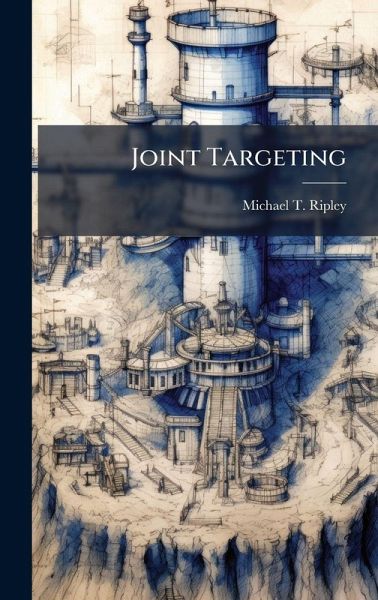
Joint Targeting
Versandkostenfrei!
Versandfertig in über 4 Wochen
27,99 €
inkl. MwSt.
Weitere Ausgaben:

PAYBACK Punkte
14 °P sammeln!
Throughout history, the process of targeting the enemy and its elements of power has been an essential component of achieving victory in warfare. The process of identifying, prioritizing and affecting targets in accordance with national goals and military objectives becomes even more critical in the complex operational environment of the 21st Century. The United States military uses the Joint Targeting Process as the critical linkage in translating desired effects into the actions that accomplish objectives and achieve victory. This monograph evaluates the effectiveness of the Joint Targeting ...
Throughout history, the process of targeting the enemy and its elements of power has been an essential component of achieving victory in warfare. The process of identifying, prioritizing and affecting targets in accordance with national goals and military objectives becomes even more critical in the complex operational environment of the 21st Century. The United States military uses the Joint Targeting Process as the critical linkage in translating desired effects into the actions that accomplish objectives and achieve victory. This monograph evaluates the effectiveness of the Joint Targeting Process in the current operational environment using research surveys. The paper examines the evolution of joint targeting methodology, the principles of targeting, the current application of joint targeting, and the emerging trends in the operational environment that affect targeting. The monograph then analyzes survey data to provide observations on the current effectiveness of systematic targeting procedures. Finally, the concluding section of the monograph offers recommendations on how to improve the education, training, and doctrine integration involving the Joint Targeting Process. This work has been selected by scholars as being culturally important, and is part of the knowledge base of civilization as we know it. This work was reproduced from the original artifact, and remains as true to the original work as possible. Therefore, you will see the original copyright references, library stamps (as most of these works have been housed in our most important libraries around the world), and other notations in the work. This work is in the public domain in the United States of America, and possibly other nations. Within the United States, you may freely copy and distribute this work, as no entity (individual or corporate) has a copyright on the body of the work. As a reproduction of a historical artifact, this work may contain missing or blurred pages, poor pictures, errant marks, etc. Scholars believe, and we concur, that this work is important enough to be preserved, reproduced, and made generally available to the public. We appreciate your support of the preservation process, and thank you for being an important part of keeping this knowledge alive and relevant.












